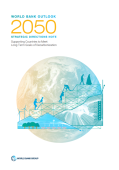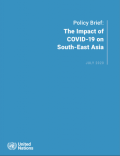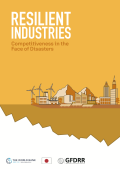
This resource discusses water security and the green economy, post-COVID-19.

This report identifies key economy-wide actions for long-term decarbonisation and sustainable recovery from COVID-19.

This policy brief examines how the eleven countries of South-East Asia are coping with the immediate impacts of COVID-19, focusing on the subregion’s socio-economic response and providing four sets of recommendations for a recovery that leads to a more sustainable, resilient, and inclusive future.

The purpose of the Resilient Water Infrastructure Design Brief is to guide users on how resilience can be built into the engineering design of their project. With a focus on the three natural hazards most likely to affect water and sanitation infrastructure (droughts, floods, and high winds from storms), the document provides a six-step process to help users address weather and climate related challenges that are most likely to affect an infrastructure component at some point in its operational lifetime.

Disasters offer the opportunity, with the right frameworks in place, to strengthen competitiveness through build back, better initiatives, and to adapt to long-term climate change and disaster risks. Despite these insights, and the urgency to act, however, the evidential basis for policy intervention and conceptual frameworks for industry resilience are far from definitive, and gaps in knowledge remain. As a result, industry resilience policy and action remain low in both the public and private sectors, and firms and economies still face significant costs of inaction.
